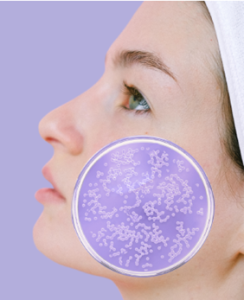 From oral care to skin care, more and more cosmetics target the microbiome and are marketed to contain probiotic, prebiotic or postbiotic ingredients. Looking at the definitions;
From oral care to skin care, more and more cosmetics target the microbiome and are marketed to contain probiotic, prebiotic or postbiotic ingredients. Looking at the definitions;
A pro-biotic is a living microorganism added to a product, either inanimate or inactive, to obtain a cosmetic benefit at the site of application, either directly or through an effect on the existing microbiota.
A pre-biotic is a non-living ingredient added to a product as a nutrient. It is intended to be used by the microbiota at the application site to provide a cosmetic benefit.
A post-biotic is a non-living component from inactivated microorganisms and/or soluble factors, such as products or metabolic byproducts released by live or inactivated microorganisms. It is also added to a cosmetic product to achieve a cosmetic benefit at the site of application either directly or through an effect on the existing microbiota.
Current Approaches
Current applicable regulations in the European Union (EU) include:
- Cosmetics Regulation 1223/2009 for products and ingredients,
- REACH and Classification, Labeling and Packaging (CLP) Regulations for ingredients in these products;
- Directive 2000/54/EC on biological agents in the workplace to protect workers against the risks associated with exposure to biological agents.
Similar principles are followed in other regions such as Brazil, Canada, Japan, USA, Israel, South Africa, South Korea, Taiwan and Thailand.
Are Pre-, Pro- and Postbiotics Cosmetic Ingredients?
If we look specifically at the EU’s definition of cosmetics, according to Article 2 of EU Cosmetics Regulation 1223/20093, a ‘cosmetic product’ is in contact with the external parts of the human body (epidermis, hair system, nails, lips and external genitalia) or the body. means any substance or mixture for which it is intended.
To explain more comprehensively, cosmetic raw materials are used exclusively or mainly to clean the teeth and mucous membranes of the oral cavity, to give them fragrance, to change their appearance, to protect them, to keep them in good condition or to correct body odours; means a chemical element and its compounds in the natural state or obtained by any manufacturing process, including any additives necessary to maintain its stability and any impurities resulting from the process used, but excluding any solvent that can be separated without affecting its stability.
According to this definition, since a substance is a “chemical element and its compounds,” this raises the question of whether, as living beings, pro-biotics should be considered cosmetic ingredients. Pre-biotics and post-biotics are non-living components, so they seem to fit the definition of a substance. The absence of this valid or invalid specification in the definition does not mean that such ingredients are not allowed or prohibited, but it creates uncertainty and some experts may argue that these ingredients are allowed in cosmetics for this reason.
Although non-EU countries have their own legal definitions for a cosmetic substance, similar principles apply worldwide.
Verification of Microbiome Claims
As a final consideration, it is important that all consumer products are tested and found to be safe for the user, and that all efficacy claims are verified. Therefore, the safety of the final product and relevant scientific data are needed to substantiate the product claims. The microbiome is part of the protective barrier of the skin that is affected by different types of cosmetic products. Microbiome-friendly skin care products should protect the skin’s natural flora.
As Macro Professional, we carefully provide the necessary analysis service for you to claim Microbiome in your cosmetic product.


